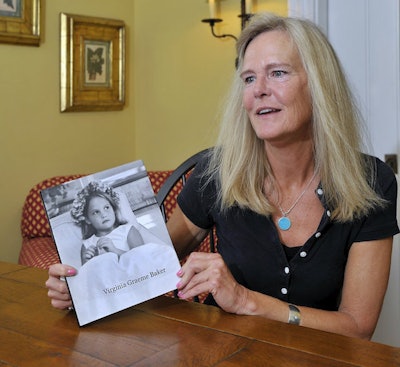
 Nancy Baker, Virginia Baker's mother.
Nancy Baker, Virginia Baker's mother.
Baker was seven years old at the time of the accident. She had learned to swim at age three. She reportedly loved the water. As is often true for such tragedies, what started out as a day of fun and celebration, a family graduation party in her case, suddenly turned horrific. She was trapped on a spa main drain by an estimated 700 pounds of pressure and could not be freed in time. The disturbing details of the incident became national news and gave rise to a movement to once and for all eliminate suction entrapment accidents, a category that also includes hair entanglement, evisceration, limb entrapment and digit entrapment.
This month marks the 15th anniversary of her death. December 19 will be the 10th anniversary of the signing of the bill that bears her name by President George W. Bush. Now with a growing statistical sample, it’s fair to ask what, if anything, have we learned in the years since VGB became the law of the land?
RELATED: VGB: Cracking the Code
From the start, the fact that she was the granddaughter of former Secretary of State James Baker III meant that her accident would draw much more attention than previous incidents. Ultimately it would result in, literally, an act of Congress and a subsequent massive drain recall in June of 2011 during the depths of the recession. Perhaps the first lesson is simply that it takes considerable political clout to effect such sweeping change and second, change on such a massive scale can come with serious consequences. The recall, for example, involved nearly a million drain covers from eight manufacturers.
We also saw just how messy the legislative process can be. Ten years ago, as of this writing, the bill was making its way through Congress having been introduced by Florida Congresswoman Debbie Wasserman Shultz. It was widely criticized for its confusing language and seemingly catch-all approach in defining a variety of acceptable preventive measures, including the use of suction vacuum release systems, unblockable drains, atmospheric release systems, shut-off switches and other measures.
For drain covers, the bill required “Each swimming pool or spa drain cover manufactured, distributed, or entered into commerce in the United States shall conform to the American National Standard ASME A112.19.8 - 2007 Suction Fittings for Use in Swimming Pools, Wading Pools, Spas, and Hot Tubs published by the American Society of Mechanical Engineers.“
As we approach the 10th anniversary, it’s fair to consider whether or not VGB, for all of its arcane complexity and problematic implementation, has worked. The CPSC, which administers the law, may have answered that question with a May 23 press release citing the most recent available entrapment statistics.
According to the CPSC, from 2012 through 2016, there were 17 victims of entrapment in 16 incidents, with 82 percent of the incidents involving children younger than 15 years of age (14 victims). From those 16 incidents, there were two fatalities, both in residential spas. Since the Virginia Graeme Baker Pool & Spa Safety went into effect in Dec. 2008, there have been no drain entrapment-related deaths involving children in public pools and spas.
Those numbers stand in stark contrast to numbers from 2008 through 2012, which saw 39 incidents in the U.S. From 1999 to 2004 there were 45 accidents.
RELATED: VGB's Legacy: Drainless Fiberglass Pools
Clearly, going by the raw numbers, especially the fact that there have been zero accidents in VGB compliant pools and spas, the legislation has worked. For all of the controversy, expense and confusion, VGB does appear to have dramatically reduced suction entrapment accidents.
What we don’t know, and probably never will, is which measures in the law have made the difference. Is it simply the fact that old non-compliant drains had to be replaced? Or has it been the presence of SVRS devices that have saved lives, or the presence of shut-off switches or unblockable drain configurations? Because there is no reporting of non-accidents, there is no way to know the efficacy of those various measures and therefore, we’re likely to remain saddled with the law’s complexity. If the downward trend continues, the unwieldy nature of the law will no doubt stand as a small price to pay for lives saved.
Finally, for the part of the little girl who died 15 years ago, it can be said that something positive came from her loss.











































